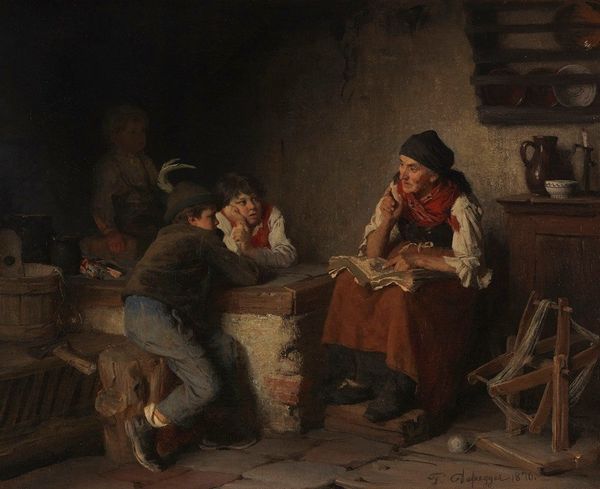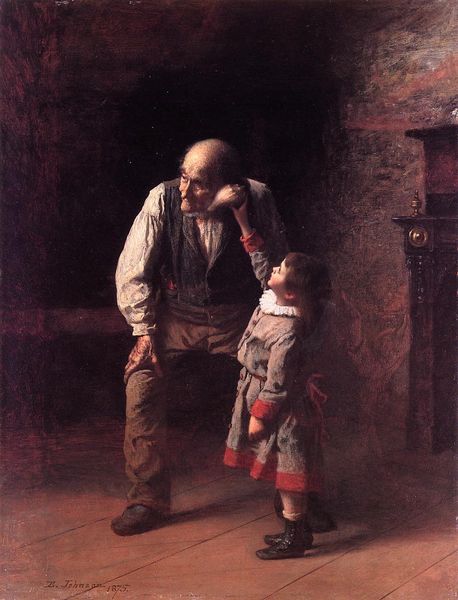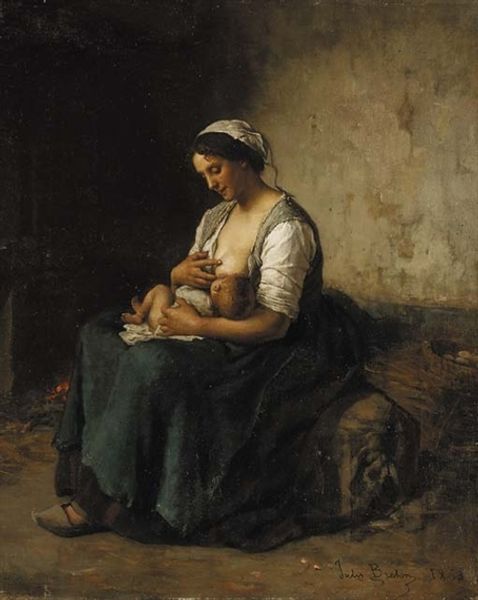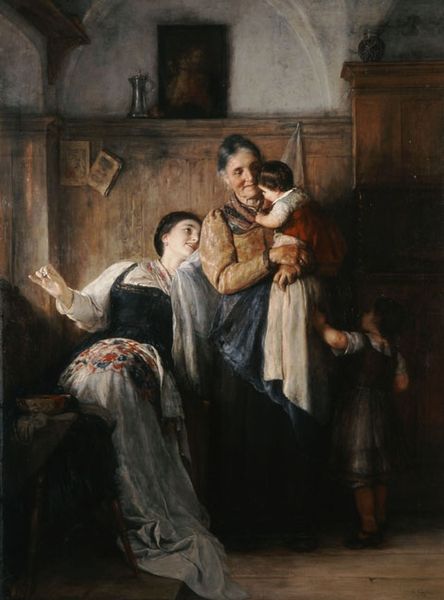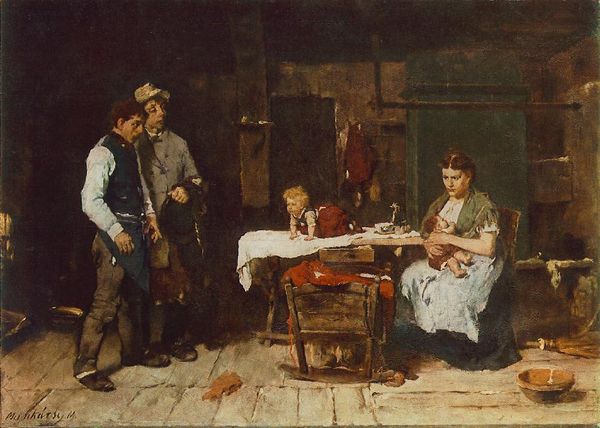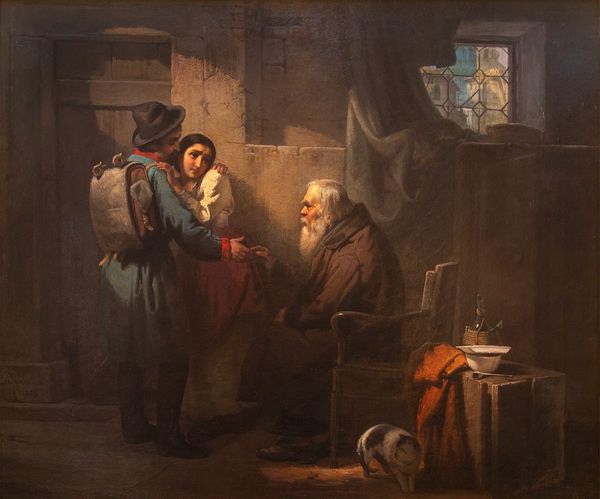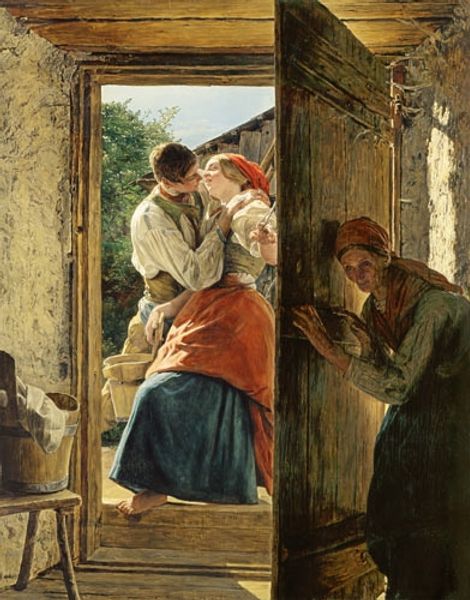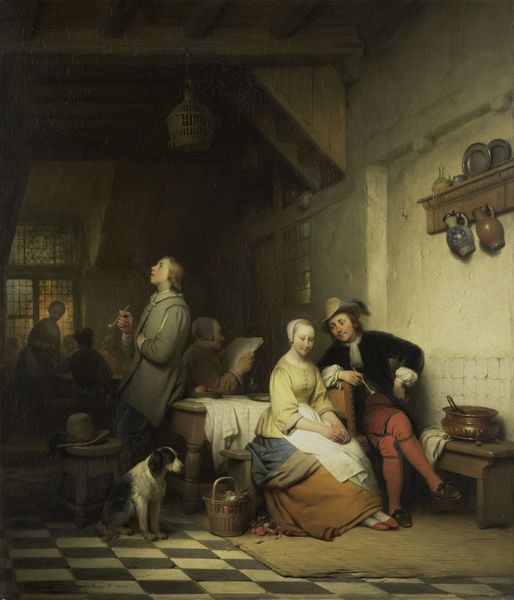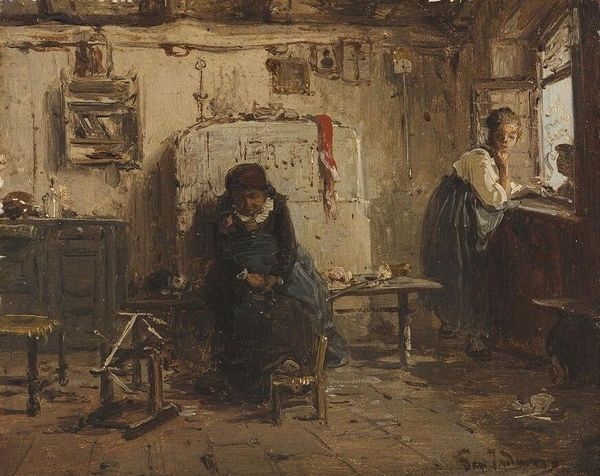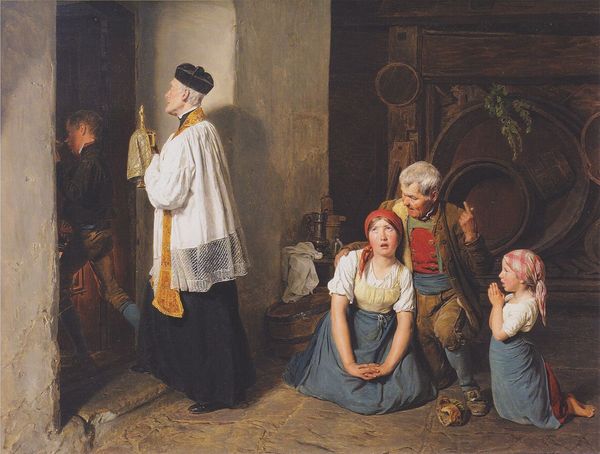
The departure of the conscript 1862
0:00
0:00
gerolamoinduno
Ricci Oddi Gallery of Modern Art, Piacenza, Italy
Dimensions: 50.5 x 64.5 cm
Copyright: Public domain
Editor: This is Gerolamo Induno's "The Departure of the Conscript" from 1862, done with oil paint. There's a palpable sense of sadness; the scene depicts a soldier leaving and a woman weeping. What details stand out to you? Curator: The artist's method itself. Consider the labor involved in producing pigments during this period. The intensity of the blue in the conscript's coat, achieved through grinding lapis lazuli or synthesizing artificial ultramarine, represents a significant investment, reflecting societal values placed on military service and national identity. Note the contrast to the more muted, earthen tones in the woman’s clothing and surrounding architecture. How does this distinction in materiality affect your interpretation? Editor: It almost feels like it emphasizes the soldier’s role as a public figure against the woman’s private grief. Does the texture created by oil paint contribute to our understanding? Curator: Absolutely. Oil paint allowed for layering and blending, mimicking the gradual transitions in emotional states, like grief or stoicism, evident in the subject's expressions. Also consider the societal structures. Conscription relies on state control over individuals. Who owns the means of war here? What’s left for the families when labor power is forcefully extracted? Editor: The materials speak volumes about power, resources, and the social costs of conflict. This has made me rethink it entirely! Curator: Indeed. By examining the materials and methods, we gain insights beyond the surface narrative and connect with the underlying forces shaping human experience.
Comments
No comments
Be the first to comment and join the conversation on the ultimate creative platform.
